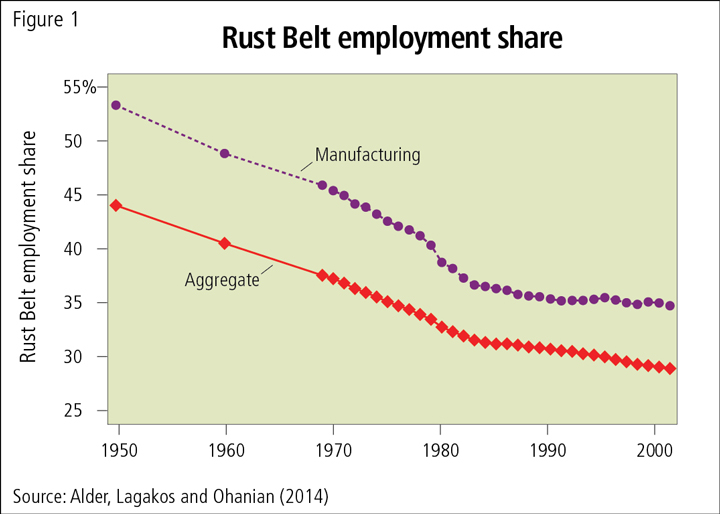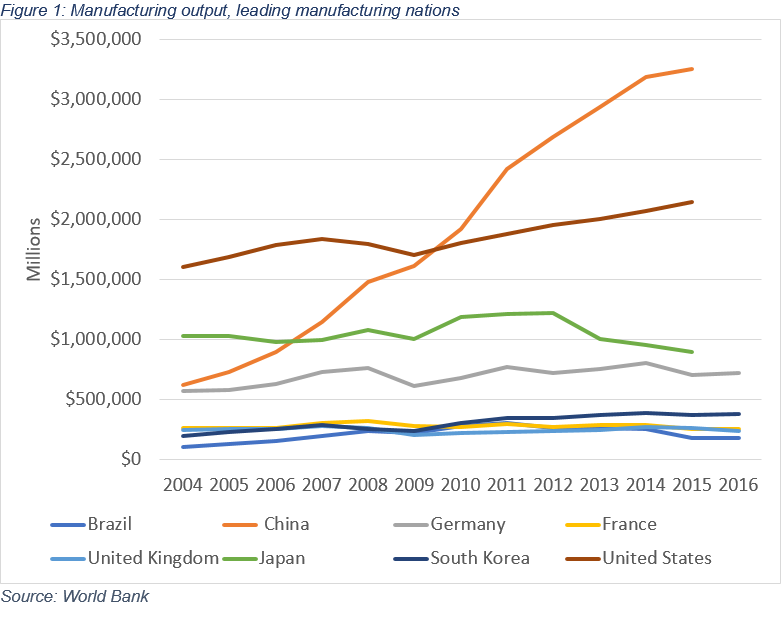Little Known Facts About What Is Industrial Manufacturing.
We oppose a heavy-handed commercial policy that requires the federal government to attempt to pick winners. Federal governments do a poor task of playing banker or endeavor capitalist, as shown by the recent brouhaha over federal and state loans and subsidies to solar-panel companies that then failed or closed some U.S

. When crucial capabilities have actually moved, trying to prop up domestic companies through subsidies or other targeted assistance is not an option. Consider the scenario in solar photovoltaics. American solar PV companies argue (correctly) that their Chinese rivals have an unreasonable advantage because of aids from the Chinese government. But Chinese competitors have another edge: Solar PV shares much of its technology facilities and supply chain with the electronics industry, which is now focused in Asia.


While we oppose targeted commercial policies, we do believe that federal government has a key role to play in supporting innovation, consisting of innovation related to manufacturing. Here are two policy approaches that history recommends will be productive: In the past, federal government financing of basic and applied research study has assisted considerably enhance the nation's structures of development.

These efforts prepared for the internet, electronic design automation, advanced computer graphics, the surge in agricultural efficiency, and the revolution in genetics-based drug discovery. The government has actually likewise played a significant function in funding the advancement of essential manufacturing innovations. Today most innovative jet engines use esoteric metals and ceramics efficient in operating under severe heat and pressure.
Much of the science underlying the processes used to make them was generated by government-funded standard research study in metallurgy in the 1960s. However over the past 2 years, moneying for metallurgical research-- and for other process-related sciences-- has actually mainly dried up. The deep combination of product-design and production processes can actually position a significant barrier to entry for beginners.
That would be an excellent primary step towards redressing the deficiency in research study financing for manufacturing-related science. And even $1 billion a year is reasonably modest when compared with the federal government's total annual R&D spending plan of $143 billion or the $31 billion NIH budget. (Of course, in today's financial environment the likelihood that the council's recommendation will be adopted is low.) Private-sector R&D is normally most productive when focused on problems directly associated to a business's particular markets, clients, or manufacturing procedures.
But companies are not well positioned to invest in fundamental or applied research. The benefits are too far in the future and too scattered. Unless the government takes the lead, a U.S. manufacturing renaissance is not likely. A full-blown exposition of tax and regulatory policies is well beyond the area limitations of this article, however it's clear that high corporate tax rates and complex, ever-changing guidelines prevent investment in U.S.
The Greatest Guide To Industrial Manufacturing Machinery
Beyond getting the fundamentals right in those locations, the most important way government can motivate domestic manufacturing may be by supporting training. We've heard the same avoid many executives we have actually talked with: "We would like to do more production in the U.S., but we can't discover people with the best technical skills." Tool and die makers, upkeep specialists, operators capable of working with highly advanced computer-controlled devices, knowledgeable welders, and even production engineers are in brief supply.
As manufacturing plants closed or downsized, lots of people in those occupations carried on to other things or retired. Seeing fewer task prospects down the roadway, youths went with other careers. And numerous community and employment schools, starved of trainees, scaled back their technical programs. Federal government policy makers have a mind-set that manufacturing is a good sector for people with less education and less training.
That has to alter. In a worldwide economy where knowledge and capabilities drive development, competitive benefit is shaped by both supervisors and policy makers. The notion that the United States and other sophisticated countries are not supposed to be excellent at production has no basis in any theory and no empirical proof to support it.

The United States has actually been performing a multidecade experiment testing the hypothesis that it can thrive as a post-industrial economy. American company leaders and policy makers should desert that experiment now-- prior to it's too late. A version of this post appeared in the March 2012 concern of Harvard Organisation Evaluation.
Some food for thought: the U.S. had as many individuals working in the manufacturing sector in December as it did 69 years earlier. The 32,000 positions added in December took the overall variety of positions in manufacturing to 12.84 million. In November 1949, there were 12.88 million manufacturing workers, at the end of a sharp economic downturn.

in 2019 in another way. Then, some 30% of American civilian employees outside the farm sector remained in production; now, that portion stands at just 8.5%, about as low as it's ever been. The burrowing of America's industrial base, and the loss of the highly paid tasks for the high-school informed that accompanied them, goes some method to show the tectonic shifts in U.S
. Last year, 264,000 new production jobs were included, representing the greatest number of new employees because 1988. As a percent of the total workforce, production rose for the first time considering that 1984. The White Home has not been shy about taking credit, and it's framing present trade settlements with China as a method of further increasing those numbers.
The Ultimate Guide To Industrial Manufacturing Companies
Bernard Baumohl, primary global financial expert for The Financial Outlook Group in Princeton, N.J., said two significant things are occurring-- one, companies are deciding to hire employees rather than increase capital investment, and 2, the White House is actively trying to interfere with international supply chains. Baumohl stated business have actually pertained to the conclusion that the likely 3% development the U.S.
" Workers are viewed more like inventory," he says. "If you need them, you can hire them, and if the economy really turns south, you can let them go." "CEO have taken a very reasonable approach," he stated. Furthermore, companies currently are carrying a record amount of financial obligation, all at a time when interest rates are rising.
go now Related Site click reference